Ever wondered how lions, tigers, and leopards spill their secrets without uttering a single roar? Big cats are the masters of silent conversation, sending messages with every twitch of their tail and flicker of their eyes. From a sassy tail swipe to a subtle head bump, these feline giants have a whole dictionary of gestures and body language that keep their families, friends, and rivals in the loop. Let’s sneak into their world and discover 25 wild and wonderful ways the big cats talk without a whisper!
1. Tail Flicks: The Feline Morse Code

If you see a big cat’s tail twitching or flicking, pay close attention—it’s like watching a text message pop up in the savanna! A gentle swish can mean curiosity, while a rapid flick often shouts irritation or impatience. Some cats use tail flicks to warn others to back off their prey, while others use it to playfully tease their cubs. It’s a visual language that even other animals pick up on, kind of like a universal emoji in the wild. Isn’t it wild how a single tail can say so much?
2. Ear Positions: The Mood Antennae

Big cats have ears that work like built-in mood meters. When their ears are perked forward, they’re alert and interested—maybe spotting dinner or a new friend. Flattened ears, on the other hand, signal fear, anger, or a warning to stay away. Sometimes, a cat might swivel its ears independently, tuning in to different sounds while also showing off its mood. It’s a bit like having remote-control antennae, always signaling their feelings to those around them.
3. Eye Contact: The Silent Stare-Down
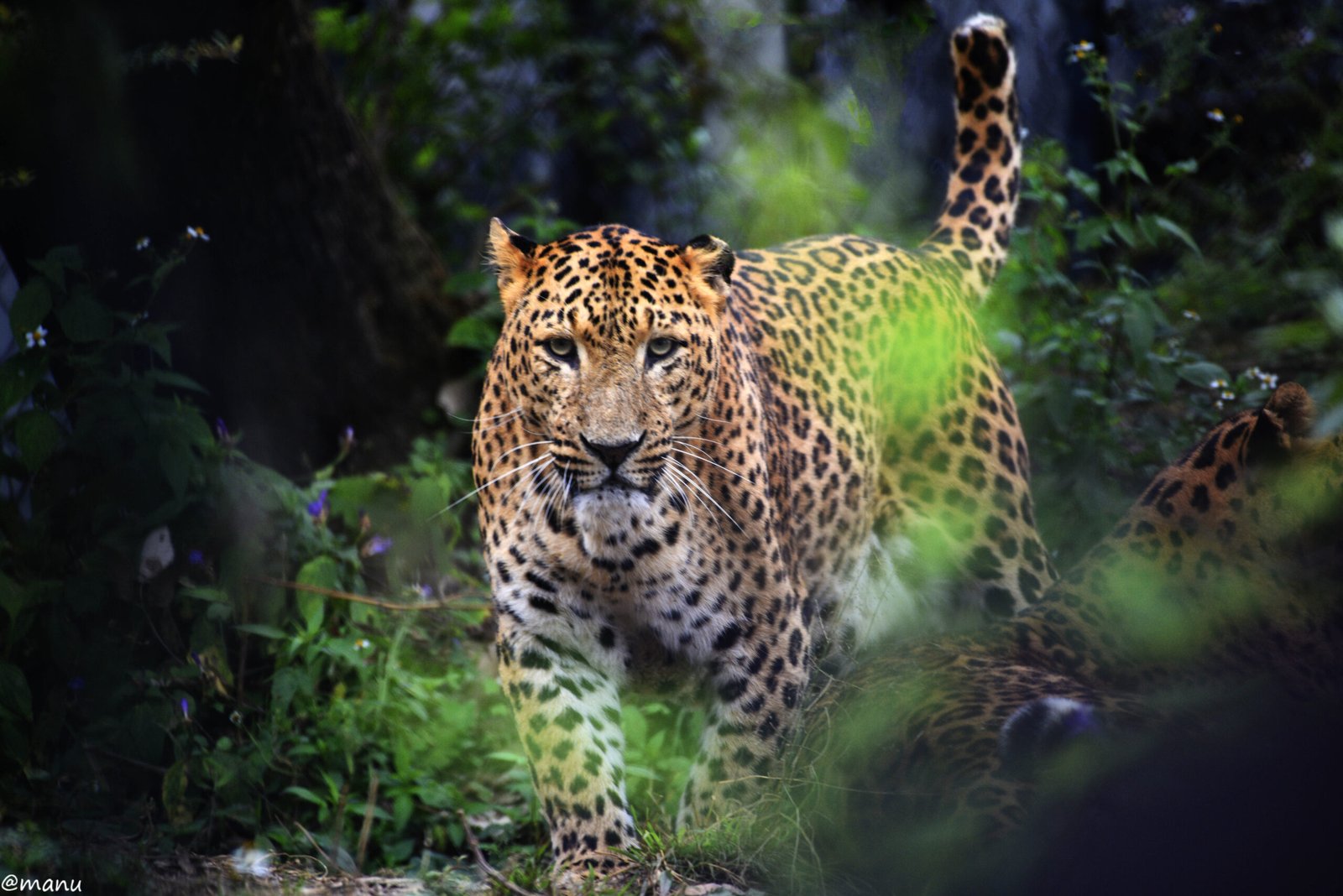
A big cat’s gaze is more powerful than any words. Direct eye contact can be a challenge, a threat, or even a sign of affection, depending on the situation. Lions often lock eyes to assert dominance in their pride, while leopards might avoid direct stares to keep the peace. Just like humans, when a big cat holds your gaze, you know something important is being said—no words needed!
4. Whisker Messages: The Fuzzy Feelers

Those long, twitchy whiskers aren’t just for measuring tight spaces—they’re also part of the big cat’s silent vocabulary. Forward-facing whiskers can signal excitement or curiosity, while whiskers pulled back show caution or defensiveness. Cubs even learn to read these signals from their mothers, much like kids might watch a parent’s face for clues. It’s a subtle, fuzzy way to broadcast what’s happening inside.
5. Scent Marking: Smelly Social Media

Think of scent marking as a big cat’s version of posting a status update. By rubbing their faces or bodies on trees, rocks, or the ground, these felines leave behind personal scents packed with information. Other cats sniff these spots to figure out who’s been around, their age, their health, and even if they’re ready to mate. It’s like leaving a scented calling card—no words, just whiffs!
6. Rubbing and Head Bumps: The Secret Handshake

When two big cats greet each other with a rub or a gentle head bump, it’s more than just a friendly hello. This nuzzle transfers scents, strengthens bonds, and shows trust. Lions are especially known for their enthusiastic head rubs, often exchanged after a long hunt or nap. It’s a heartwarming gesture that says, “You’re part of my crew,” all without a single purr.
7. Grooming Sessions: Love and Loyalty

Mutual grooming—called allogrooming—is like a spa day and a trust exercise rolled into one. Big cats lick and clean each other’s fur to remove dirt and parasites, but the real magic is in the bond it creates. This gentle, silent ritual is common among pride members and siblings, showing affection, loyalty, and even peacemaking after a squabble. It’s their way of saying, “We’re family.”
8. Body Posture: The Living Mood Board

A big cat’s entire body acts as a billboard for its feelings. A crouched posture might signal readiness to pounce (watch out, prey!), while a stretched, relaxed pose shows contentment. When a cat arches its back or puffs up, it’s usually warning someone to back off. Every twitch, stretch, or hunch sends a clear message to anyone watching—a walking, furry mood board.
9. Facial Expressions: The Expressive Muzzle

Big cats are surprisingly expressive, even if they don’t smile or frown like humans. A wrinkled nose, bared teeth, or narrowed eyes can all signal different emotions—from annoyance to playfulness to outright aggression. Tigers in particular are famous for their “Flehmen response,” where they curl back their lips to sniff out scents. It looks silly, but it’s a serious way to gather information and send signals.
10. Paw Gestures: The Silent Tap

A gentle paw tap between big cats can mean anything from a playful invitation to a warning not to get too close. Cubs use their paws to practice hunting skills, but adults also tap or bat at each other during play or when establishing boundaries. It’s a soft, silent way to test the mood or invite a game—no growls required.
11. Rolling Over: The Ultimate Trust Fall

When a big cat flops onto its back, belly exposed, it’s the ultimate sign of trust. This vulnerable pose is rarely shown to strangers but is common among pride members or close companions. It’s a silent way to say, “I feel safe with you,” and can even be an invitation to play or groom. Not many animals are brave enough to show their soft side so openly!
12. Stretching Displays: The Lazy Morning Hello
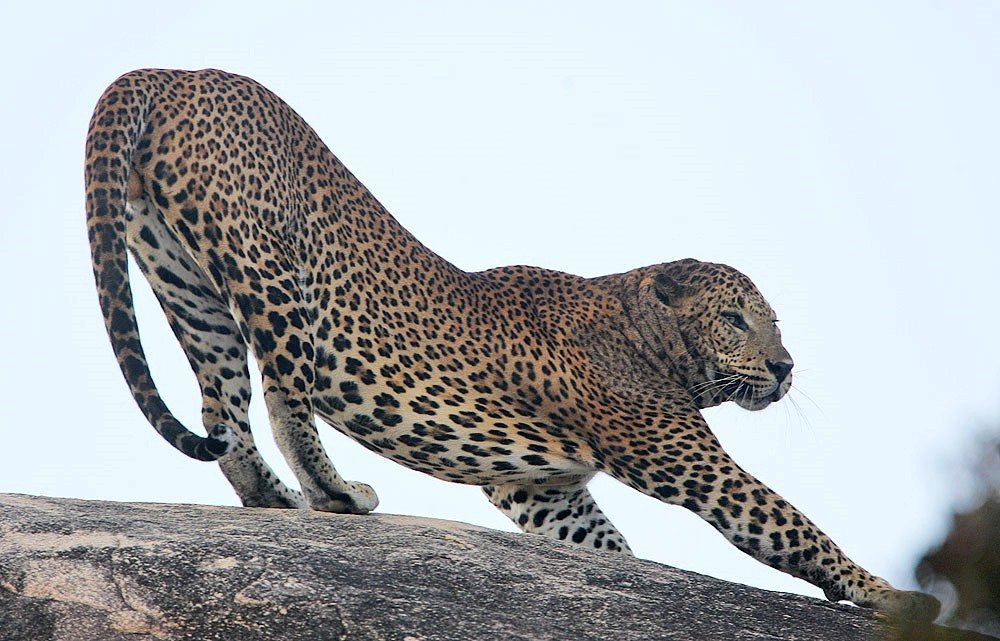
Big cats love a good stretch, and it’s not just about loosening up. A long, slow stretch can be a sign of relaxation, friendliness, or even a subtle invitation to interact. In the wild, a lion’s sunrise stretch often signals the start of social activity in the pride. It’s their way of saying, “I’m ready to face the day—are you?”
13. Tail-Up Greeting: The Exclamation Point

If you spot a big cat walking toward another with its tail straight up, you’re seeing the feline version of an enthusiastic wave. This posture is a clear sign of friendliness and confidence, often used by cubs greeting their mothers or adults reuniting after a hunt. It’s a simple move that says, “Hey! I’m happy to see you!”
14. Nose Touches: The Softest Hello

A gentle nose-to-nose greeting is one of the sweetest, quietest ways big cats say hello. This soft gesture transfers scents and reassures both cats that everything’s okay. It’s especially common between mothers and cubs, or among close friends within a pride or coalition. Imagine how different human greetings would be if we all said hi with a gentle nose boop!
15. Silent Stalking: Communicating Stealth
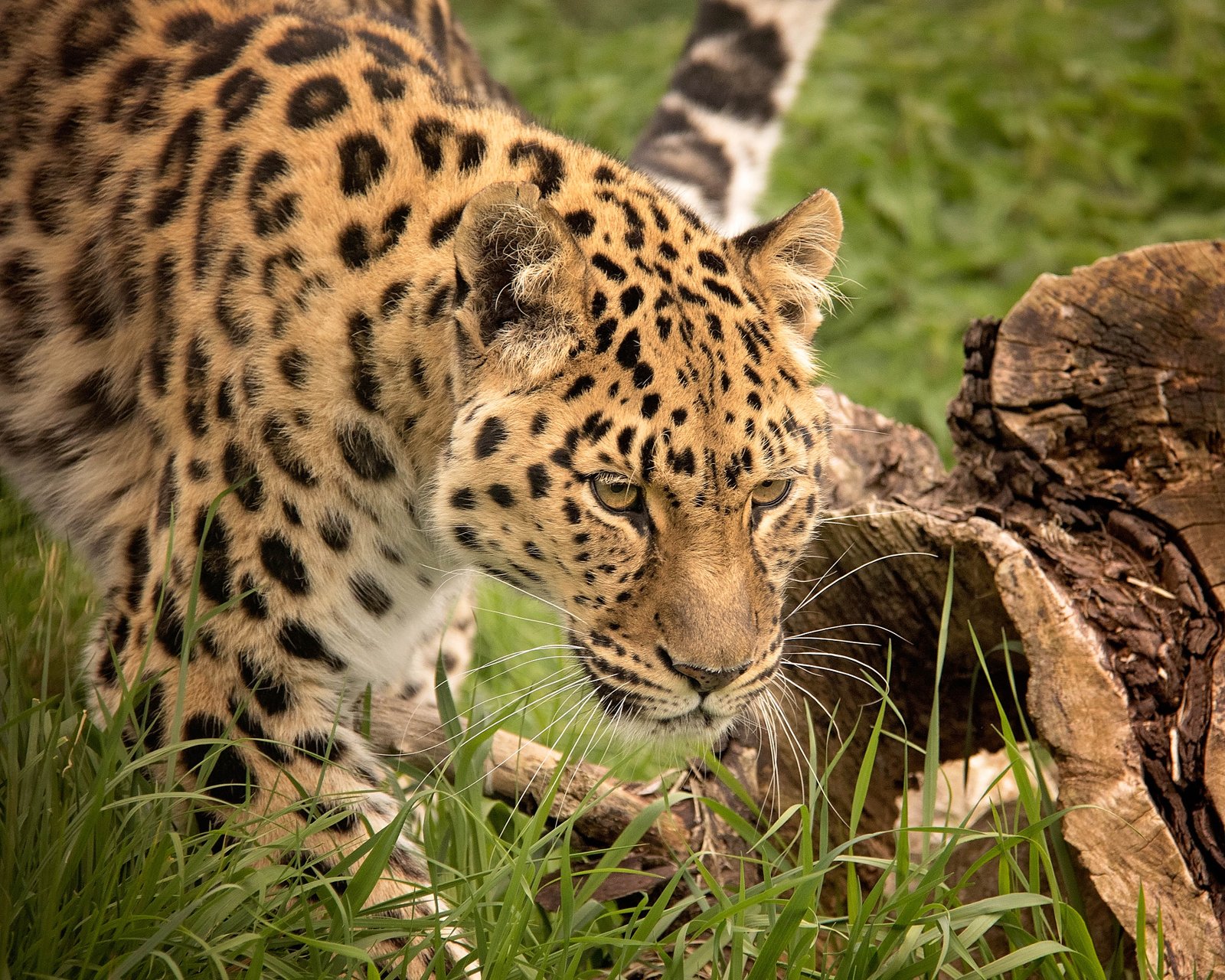
When a big cat moves in total silence, low to the ground and eyes fixed ahead, it’s not just hunting—it’s telling others, “Stay back, I’m on a mission.” Other cats pick up on this body language and know not to interrupt. It’s like a “Do Not Disturb” sign, written in every careful paw step and focused stare.
16. Grooming Cubs: The Gentle Lesson

Mother cats spend hours grooming their cubs, but it’s more than just cleaning. Each lick and nuzzle teaches the cubs about love, trust, and the rules of cat society. Cubs quickly learn to read their mother’s silent cues, picking up life lessons without a word spoken. It’s like getting a masterclass in feline etiquette—all delivered with a tongue bath!
17. Sitting Tall: The Lookout Post

A big cat sitting tall with its head held high is keeping watch—and sending a message to everyone around. This regal posture says, “I’m in charge here,” and can deter rivals or assure pride members that all is well. It’s a silent show of leadership that even the youngest cubs learn to recognize and respect.
18. Kneading Paws: The Kitten Call

Ever seen a cat knead with its paws, like it’s making bread? Big cats do it too, especially when they’re feeling happy or nostalgic. This motion harks back to kittenhood, when cubs kneaded their mothers to stimulate milk flow. Among adults, it’s a sign of comfort and contentment—a nostalgic, silent lullaby.
19. Play Bows: The Invitation to Fun

A sudden play bow—where a big cat lowers its front half while keeping its rear in the air—is an unmistakable invite to play. Cubs and adults alike use this gesture to signal that any rough-and-tumble that follows is all in good fun. It’s a joyful, bouncy way to break the ice and keep social bonds strong.
20. Slow Blinking: The Cat Kiss

Slow blinking isn’t just a housecat thing—big cats do it too! When a lion or tiger closes its eyes slowly in the presence of another, it’s a sign of trust and affection. It’s like blowing a kiss across the savanna, a quiet way to say, “I feel safe and happy with you.” Try it with your pet cat—chances are, they’ll blink right back!
21. Sprawling Together: The Cuddle Club
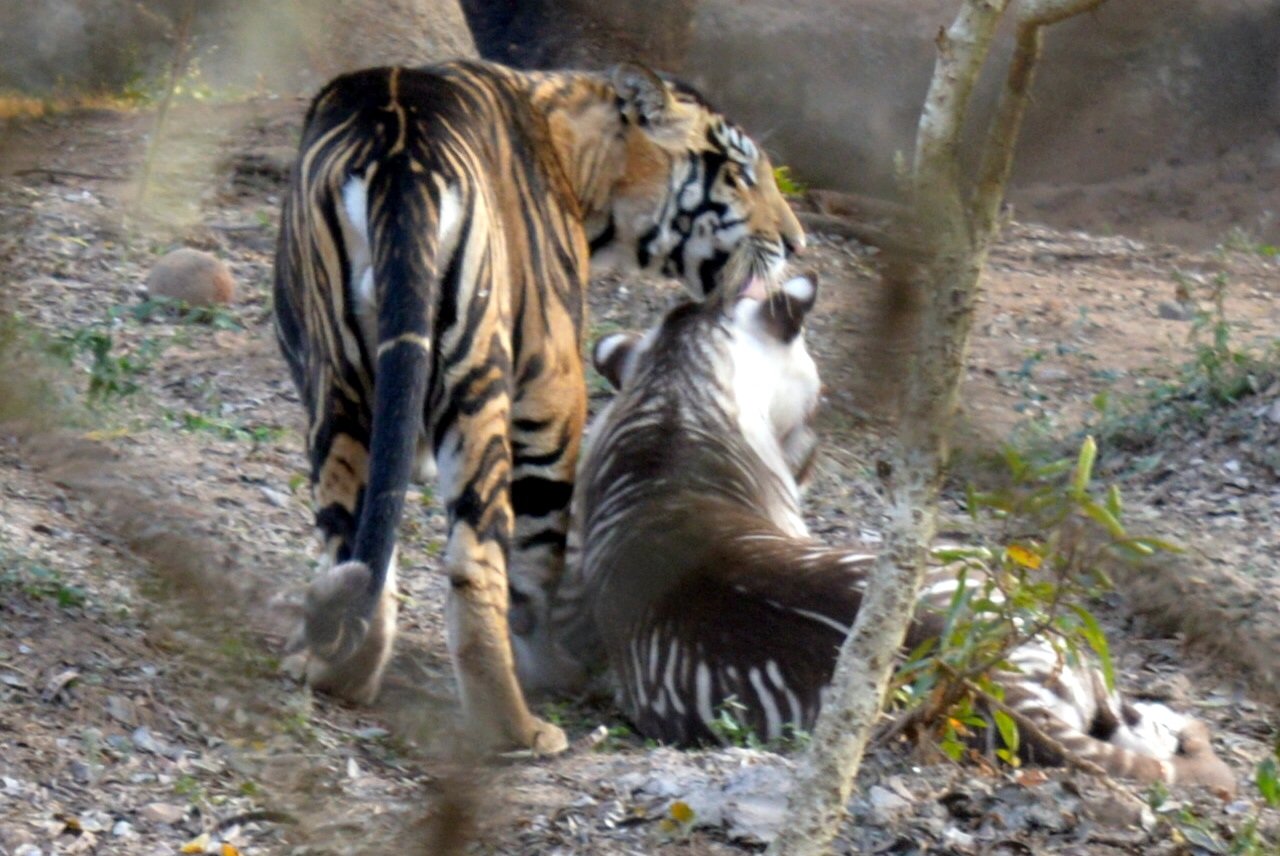
When big cats nap in a tangled pile, it’s not just about keeping warm. This close contact reinforces social bonds and signals acceptance within the group. It’s their version of a group hug, with every purr and sigh adding to the message of togetherness. In the wild, there’s nothing quite as cozy—or communicative—as a pride pile-up.
22. Marking with Claws: The Scratchpad Statement
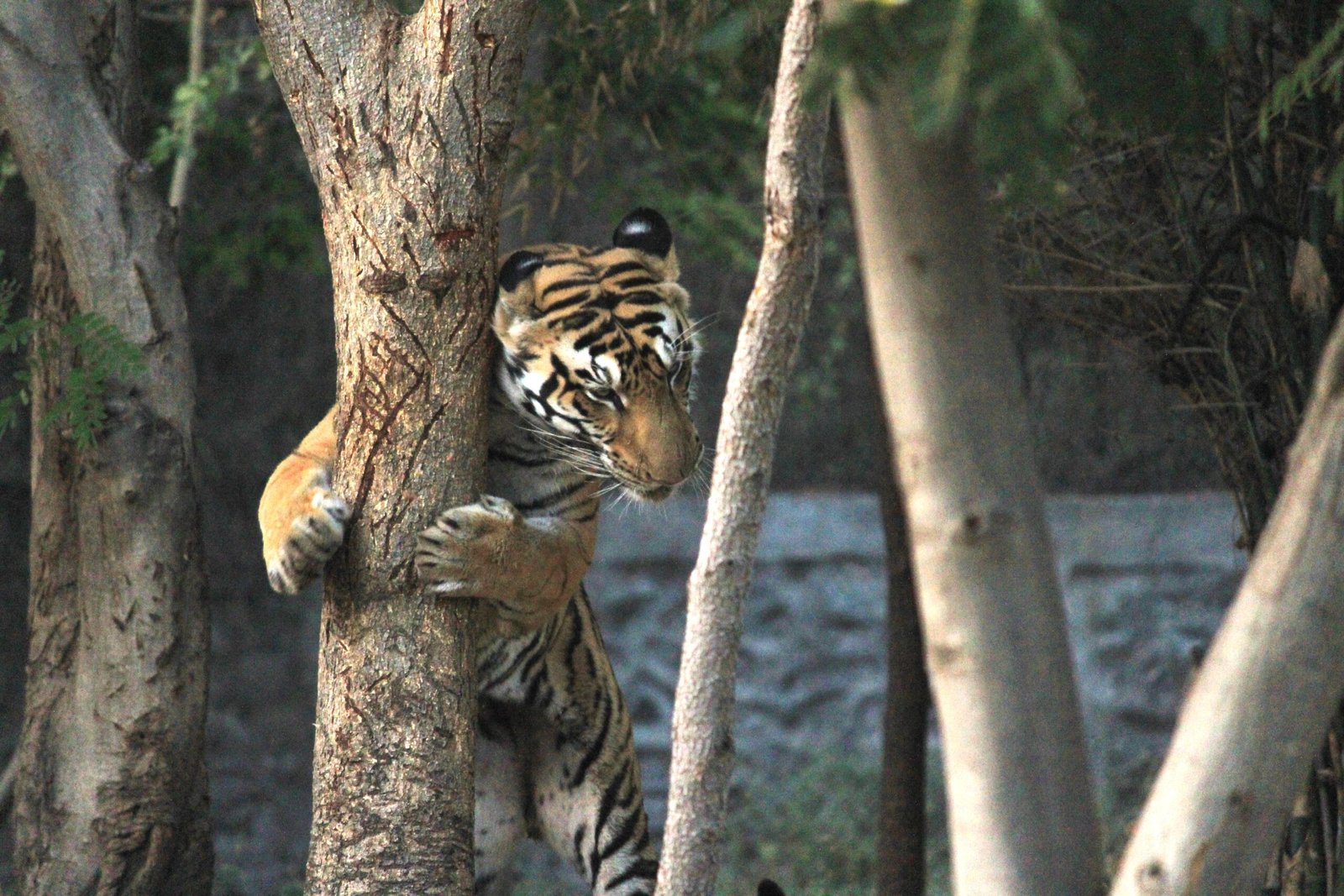
Big cats don’t just sharpen their claws on trees for fun—it’s a form of communication! Each scratch leaves behind visual and scent marks, telling other cats, “I was here, and this is my turf.” It’s like leaving a signature on every corner of their territory, all without making a sound.
23. Frozen Stillness: The Pause That Says It All
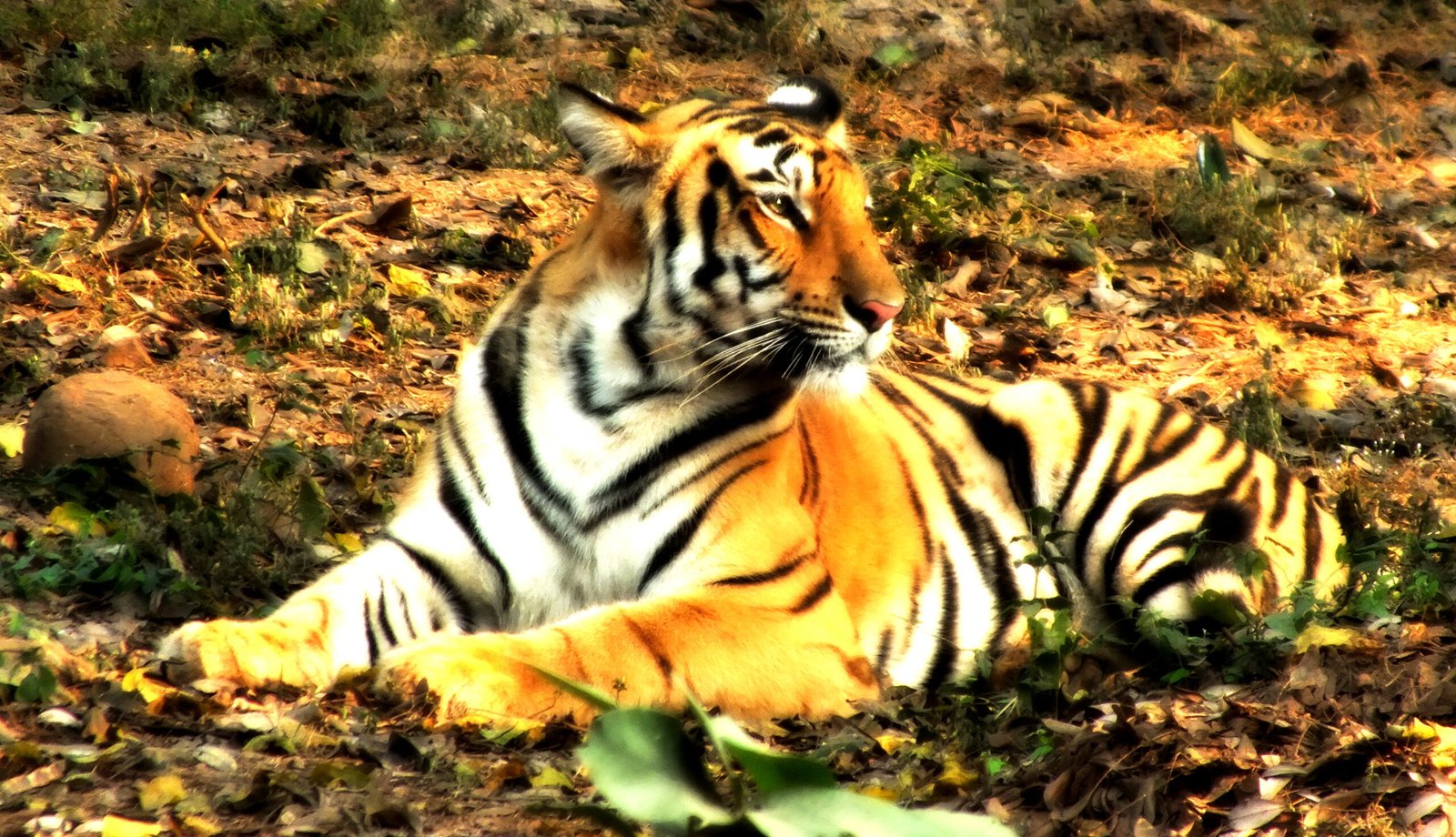
Sometimes, the loudest message is total silence. A big cat that freezes mid-step is telling others to pay attention—there’s danger, prey, or something interesting nearby. This stillness is contagious; others quickly catch on and mirror the pose. It’s a dramatic, tension-filled moment that speaks volumes.
24. Synchronized Movements: The Choreographed Dance

Lions and other big cats often move in perfect sync, especially when hunting or patrolling territory. This silent coordination relies on subtle cues and shared understanding, strengthening bonds and ensuring success. It’s like watching a perfectly practiced dance troupe—every step in harmony, every glance understood.
25. Flicking Tongues: The Scent Sampler

You might spot a big cat flicking its tongue in and out, almost like a snake. This quirky move helps them sample scents in the air—especially pheromones left by other cats. It’s their way of reading the room, gathering information, and sometimes signaling excitement or curiosity. Who knew a tiny tongue flick could be such a powerful conversation starter?
Which of these silent feline chats would you love to witness in person?

Suhail Ahmed is a passionate digital professional and nature enthusiast with over 8 years of experience in content strategy, SEO, web development, and digital operations. Alongside his freelance journey, Suhail actively contributes to nature and wildlife platforms like Feline Fam, where he channels his curiosity for the Feline into engaging, educational storytelling.
With a strong background in managing digital ecosystems — from ecommerce stores and WordPress websites to social media and automation — Suhail merges technical precision with creative insight. His content reflects a rare balance: SEO-friendly yet deeply human, data-informed yet emotionally resonant.
Driven by a love for discovery and storytelling, Suhail believes in using digital platforms to amplify causes that matter — especially those protecting Earth’s biodiversity and inspiring sustainable living. Whether he’s managing online projects or crafting wildlife content, his goal remains the same: to inform, inspire, and leave a positive digital footprint.






